







CONGRESS PLACES:
Congress Lectures (19-21.09):
Podlasie Opera and Philharmonic, Białystok, 1 Odeska Street
Welcome Reception (19.09):
Branicki Palace, Białystok, 1 Kilińskiego Street
Polish Night (20.09):
Five Oaks, Supraśl, 7 Rymarka Street
Pre-Congress Workshops (18.09):
Hampton by Hilton Hotel, Białystok, 2 Szymborskiej Street
In recent years, occlusal surface designs for fixed dental prostheses (FDPs) driven by personalized mandibular movements have been introduced. Although these technological developments are promising, dentists still encounter numerous challenges. The first challenge is the clinical assessment of jaw kinematics. In clinical practice, jaw kinematic findings are used to diagnose and assess temporomandibular disorders pre- and post-treatment, and to monitor treatment progress. In addition, the recorded motion data is utilized to fabricate FDPs via a computer-aided design/computer-aided manufacturing system. Altered jaw kinematics reflects both oro-facial motor behavioral adaptation and articular impairment. Thus, dentists must address altered jaw kinematics resulting from motor behavior adaptation and normal kinematics to manufacture dental prostheses using digital technology. Read more >>
Despite the fact that dental practitioners and patients still believe in a role for occlusal factors in the etiology of bruxism, there is insufficient evidence to support that notion. Occlusal factors should thus be ignored in the management of bruxism. On the other hand, possible negative consequences of bruxism do occur, notably mechanical tooth wear, fractures/failures of dental restorations and implants, and temporomandibular disorders (TMDs), although also for these associations convincing evidence is still lacking. In the light of all this, clinicians should make serious work of preventing occlusal dysesthesia, i.e., a preoccupation with the bite due to the belief that bruxism (and TMD) are caused by occlusal factors, as to maintain an as-high-as-possible oral health-related quality of life in their bruxing patients. Read more >>
Bruxism is an oral condition that is gaining increasing attention from several dental and medical practitioners for its multifaceted clinical implications.
The bruxism construct has shifted from pathology to motor activity with possibly even physiological or protective relevance. An expert panel including professionals from different medical fields published two consecutive papers focusing on the definition of bruxism, as well as the first multidimensional evaluation system (Standardized Tool for the Assessment of Bruxism - STAB) and a screeening instrument (BruxScreen) to reflect the current bruxism paradigm shift from pathology to behavior (that is, muscle activity). Read more >>
The association between occlusion and TMD has been discussed for decades: formerly, occlusion was the “main cause” for TMD, today, occlusion is one of several factors which might be associated with TMD. Some scientist/dentists even claim, that occlusion has no association with TMD at all. Read more >>
Regardless of whether dental treatment is conducted by a single practitioner or a team of specialists, the aim and prerequisite for long-term therapeutic success involve rehabilitating the functions of the masticatory system, taking into account the orthopedic, stable position of the temporomandibular joints. The emergence of new digital instruments for occlusal analysis makes them considerably easier to use and provides significantly more diagnostic information compared to analog methods, such as analog axiography. Digital data also allow the reproduction of jaw movements one-to-one in a virtual environment, where prosthetic reconstructions are designed. However, regardless of the technology, the perennial dilemma remains – what do we record? Do we truly record the stable and repeatable position of the jaw, or the habitual one, in which the functioning masticatory system is destined for progressive degradation. Read more >>
With the implementation of digital workflows in Dentistry, a significant part of the design and fabrication procedures of prosthetic restorations have radically evolved towards CAD/CAM technology.
A portion of restoration protocols, which for instance involved the use of conventional impressions, models, and their assembly and workflow based on facial arches and mechanical articulators, is in a significant phase of involution.
On the other hand, the implementation of diagnostic protocols and digital smile design are influenced by 2D digital photography and the use of 3D facial scanners. Read more >>
In the rapidly evolving field of dentistry, precision and customization in dental restorations are paramount. This lecture delves into the transformative journey of dental articulators, from their traditional roots to the forefront of digital innovation. We begin with an exploration of the fundamental theories underpinning dental articulators, highlighting the critical role of articulators in replicating the complex movements of the human jaw, thereby ensuring restorations not only fit aesthetically but function optimally. Read more >>